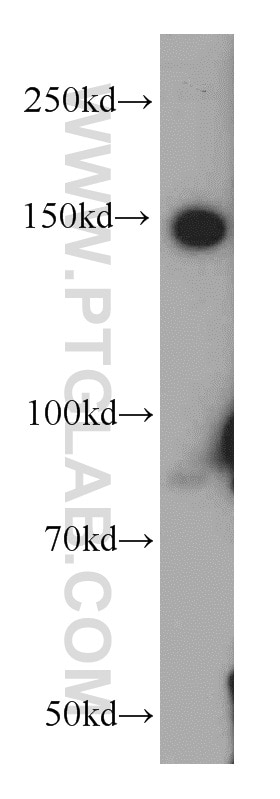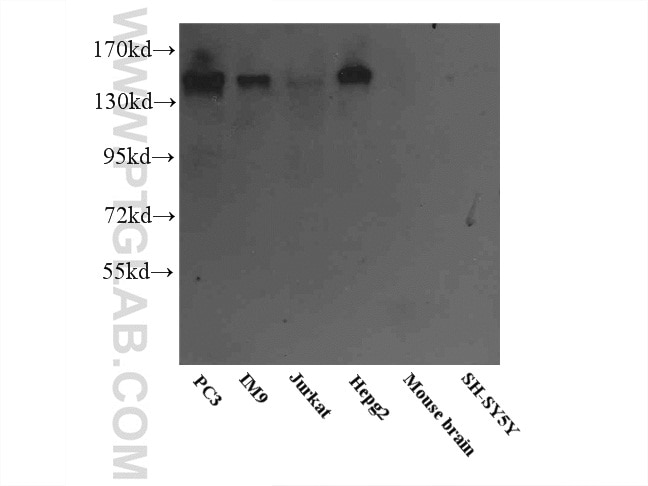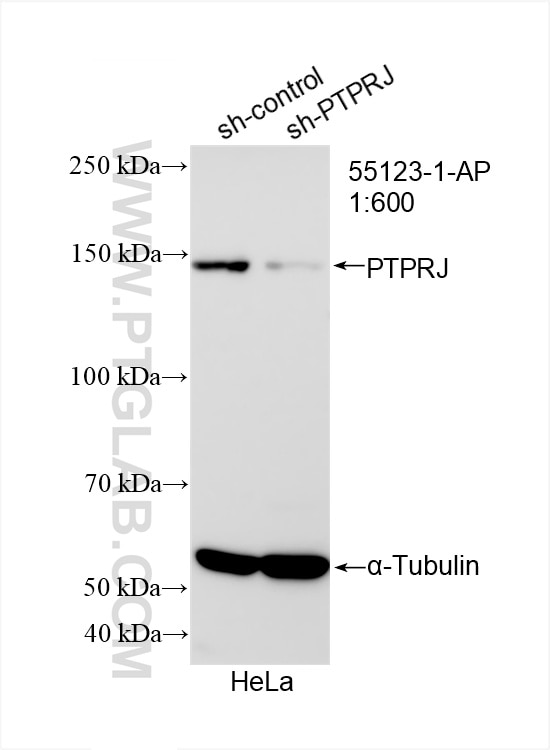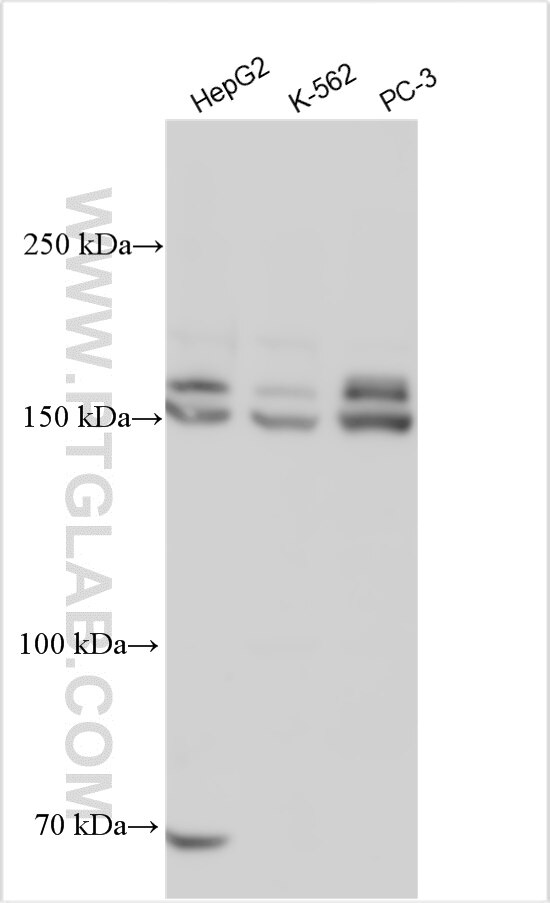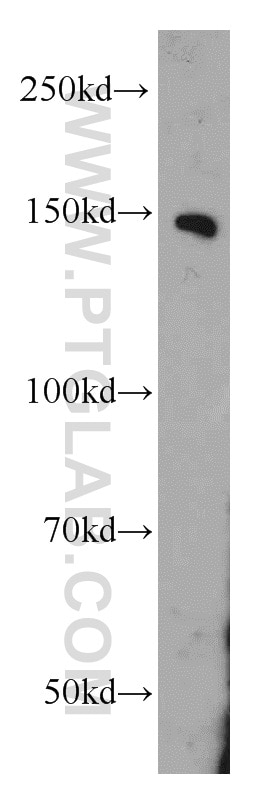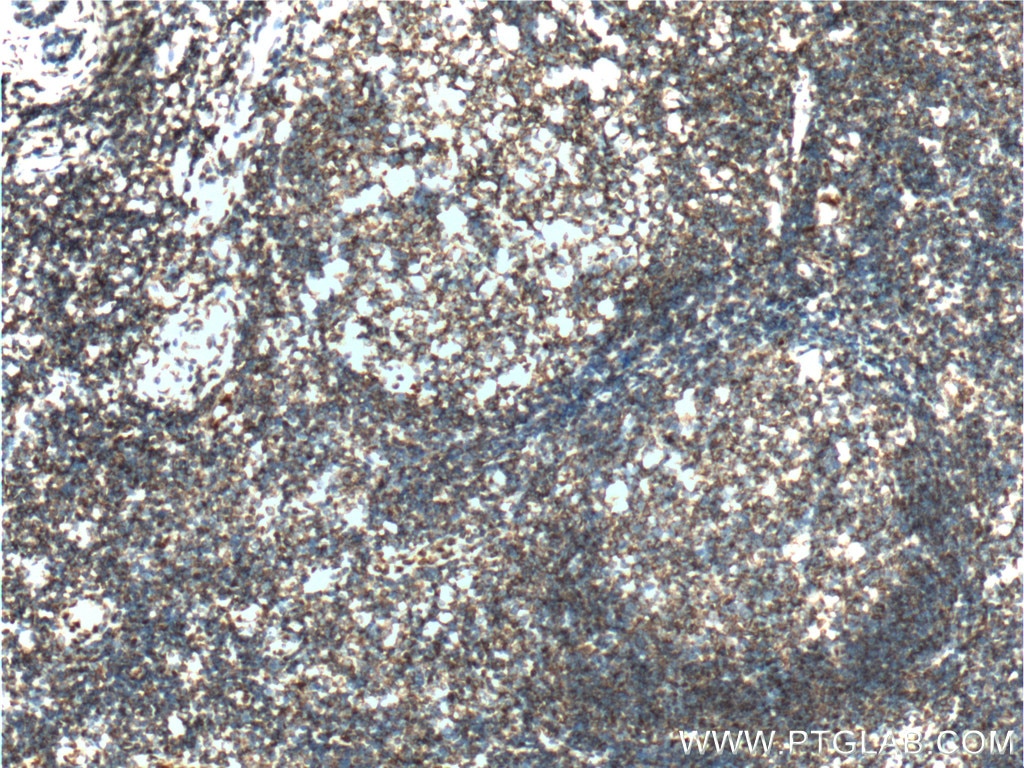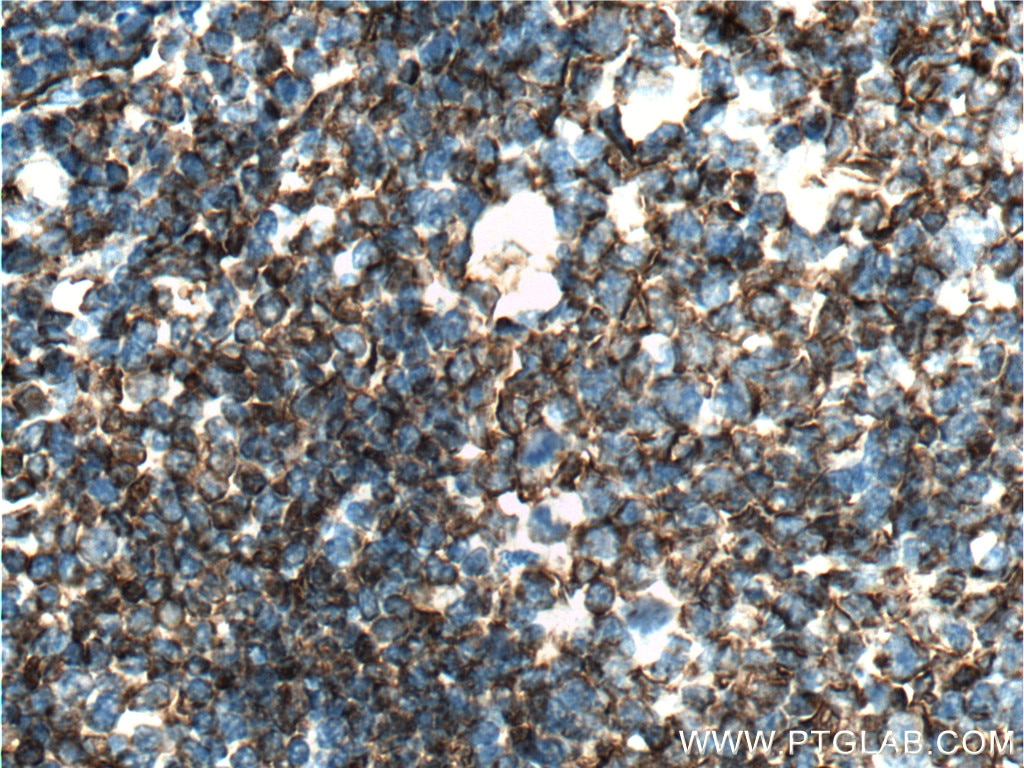- Phare
- Validé par KD/KO
Anticorps Polyclonal de lapin anti-PTPRJ
PTPRJ Polyclonal Antibody for WB, IHC, ELISA
Hôte / Isotype
Lapin / IgG
Réactivité testée
Humain
Applications
WB, IHC, ELISA
Conjugaison
Non conjugué
N° de cat : 55123-1-AP
Synonymes
Galerie de données de validation
Applications testées
| Résultats positifs en WB | cellules HepG2, cellules HeLa, cellules Jurkat, cellules K-562, cellules PC-3, multi-cellules/tissus |
| Résultats positifs en IHC | tissu d'amygdalite humain il est suggéré de démasquer l'antigène avec un tampon de TE buffer pH 9.0; (*) À défaut, 'le démasquage de l'antigène peut être 'effectué avec un tampon citrate pH 6,0. |
Dilution recommandée
| Application | Dilution |
|---|---|
| Western Blot (WB) | WB : 1:500-1:1000 |
| Immunohistochimie (IHC) | IHC : 1:100-1:400 |
| It is recommended that this reagent should be titrated in each testing system to obtain optimal results. | |
| Sample-dependent, check data in validation data gallery | |
Applications publiées
| WB | See 2 publications below |
| IHC | See 2 publications below |
Informations sur le produit
55123-1-AP cible PTPRJ dans les applications de WB, IHC, ELISA et montre une réactivité avec des échantillons Humain
| Réactivité | Humain |
| Réactivité citée | Humain |
| Hôte / Isotype | Lapin / IgG |
| Clonalité | Polyclonal |
| Type | Anticorps |
| Immunogène | Peptide |
| Nom complet | protein tyrosine phosphatase, receptor type, J |
| Masse moléculaire calculée | 146 kDa |
| Poids moléculaire observé | 146-170 kDa |
| Numéro d’acquisition GenBank | NM_002843 |
| Symbole du gène | PTPRJ |
| Identification du gène (NCBI) | 5795 |
| Conjugaison | Non conjugué |
| Forme | Liquide |
| Méthode de purification | Purification par affinité contre l'antigène |
| Tampon de stockage | PBS with 0.02% sodium azide and 50% glycerol |
| Conditions de stockage | Stocker à -20°C. Stable pendant un an après l'expédition. L'aliquotage n'est pas nécessaire pour le stockage à -20oC Les 20ul contiennent 0,1% de BSA. |
Informations générales
PTPRJ, also named as CD148 and DEP1, belongs to the protein-tyrosine phosphatase family and Receptor class 3 subfamily. PTPs are known to be signaling molecules that regulate a variety of cellular processes including cell growth, differentiation, mitotic cycle, and oncogenic transformation. PTPRJ may contribute to the mechanism of contact inhibition of cell growth. PTPRJ is present in all hematopoietic lineages, and was shown to negatively regulate T cell receptor signaling possibly through interfering with the phosphorylation of Phospholipase C Gamma 1 (PLCG1) and Linker for Activation of T Cells (LAT). It was also found to dephosphorylate PDGF beta receptor, and may be involved in UV-induced signal transduction. The antibody is specific to PTPRJ.
Protocole
| Product Specific Protocols | |
|---|---|
| WB protocol for PTPRJ antibody 55123-1-AP | Download protocol |
| IHC protocol for PTPRJ antibody 55123-1-AP | Download protocol |
| Standard Protocols | |
|---|---|
| Click here to view our Standard Protocols |
Publications
| Species | Application | Title |
|---|---|---|
J Pathol The protein tyrosine phosphatase receptor type J is regulated by the pVHL-HIF axis in clear cell renal cell carcinoma. | ||
Onco Targets Ther Comprehensive Analysis of Aberrantly Expressed Competitive Endogenous RNA Network and Identification of Prognostic Biomarkers in Pheochromocytoma and Paraganglioma. | ||
Clin Proteomics iTRAQ plasma proteomics analysis for candidate biomarkers of type 2 incipient diabetic nephropathy. | ||
Theranostics Comprehensive multi-omics analysis of pyroptosis for optimizing neoadjuvant immunotherapy in patients with gastric cancer |
